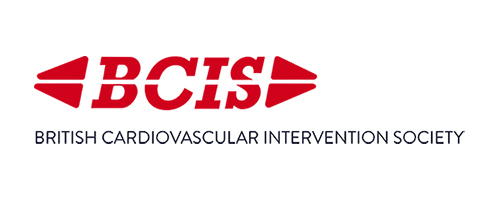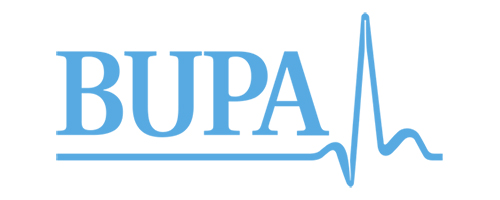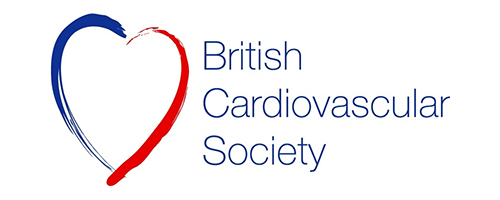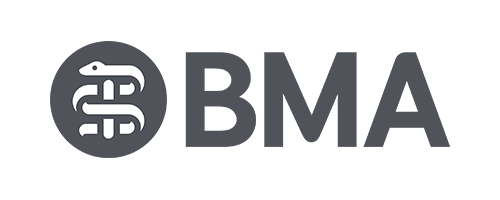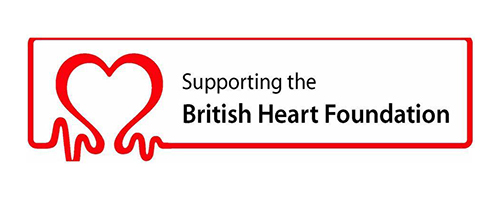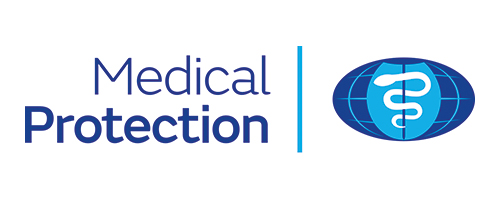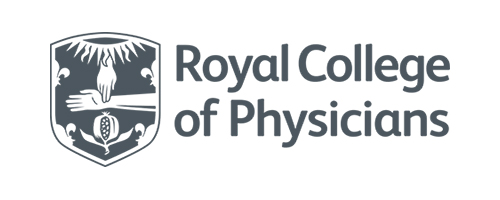The information outlined below on common conditions and treatments is provided as a guide only and it is not intended to be comprehensive.
Discussion with Dr Saha is important to answer any questions that you may have. For information about any additional conditions not featured within the site, please contact us for more information.
Normally, your cardiologist will see you promptly and arrange for a resting Electrocardiogram (ECG) and an Exercise Treadmill (ETT). If you are unable to perform physical exercise for any reason, such as arthritis or other physical disability, your cardiologist may well arrange a different type of non-invasive test, such as a cardiac MRI. If your cardiologist thinks you are at significant risk, he may arrange for you to have a Coronary Angiogram with a view to proceeding to Coronary Angioplasty (percutaneous coronary intervention or PCI).
Medical therapy:
When Angina is suspected the cardiologist may start drug treatment which could include:
• GTN spray-to help you if you get pain
• Aspirin to thin the blood
• A cholesterol lowering tablet (statin)
• Other medications which may include Beta-blockers, Calcium channel blockers, Nitrates, Nicorandil, Ranolazine or Ivabradine
Important symptoms
A narrowed aortic valve, the outflow valve to the heart, can lead on to symptoms of breathlessness, chest pain and blackouts. After a careful history, ECG and echocardiography we can advise you on the treatment which may include open surgery (aortic valve replacement, or a less invasive procedure that can be done from the groin (Transcatheter Aortic Valve Intervention (TAVI)).
Investigating aortic stenosis
If it is suspected that you have aortic stenosis you may need investigations such as an ECG, echo and coronary angiography to decide the best course of action. We concentrate on assessment and re-assessment on a regular basis, primarily through echocardiography, whilst watching out for the important symptoms suggesting deterioration in your condition.
AF can lead to palpitations, breathlessness, chest pain and also blackouts. In addition, there is an associated risk of blood clots in the heart, which in turn increase the risk of stroke. For this reason, treatment of AF is directed firstly at both reducing stroke risk with blood thinners, and also at treating the symptoms by controlling the heart rate and/or rhythm.
Symptoms and investigation
AF is initially suspected by feeling your pulse. The diagnosis needs confirmation with an electrocardiogram (ECG). Often blood tests will be taken to look for possible causes of AF, and an echocardiogram (TTE) will be needed to determine if you have a structural heart problem. A heart rhythm ECG monitor may be needed to see how fast you are going at other times, and if there are any other rhythm abnormalities present.
Treatment
The cardiologist will prescribe either warfarin, aspirin or one of the newer blood-thinning drugs, to reduce the stroke risk (see below). In addition, he/she may give you drugs to slow the heart rate down, such as betablockers or digoxin. He/she may suggest trying to get the heart beat regular again – cardioversion . This can be done with drugs or with the application of an electrical treatment whilst you are sedated. You may need ablation therapy, if you are very symptomatic.
Dr Scott can advise on whether you need warfarin or other blood thinning therapy based on the best available evidence, to reduce the risk of stroke.
Symptoms and detection
Adults with atrial septal defects (ASDs) often have minimal symptoms. You may present with mild breathlessness, or more likely, just be picked up by the doctor hearing a sound whilst listening to the heart. In addition it may be spotted when doing a routine electrocardiogram (ECG) or echocardiogram (TTE).
Further investigation
For many patients, further investigation is warranted. A decision needs to be made on the size of the hole, and of the risks and benefits of ASD closure. To assess the size of the hole. Transoesophageal echocardiography (TOE) and cardiac MRI scanning may be useful. A coronary angiogram to look for related coronary artery disease and measure heart pressures may be needed. In addition, assessment of your true limitation of exercise tolerance may be made with an exercise treadmill test (ETT).
If closure is planned, then the choice is between surgery and an umbrella device placed via a groin puncture. Umbrella closure is usually preferred.
Cardiovascular Health Screening services
During your consultation Dr Scott will discuss which tests are important in your particular case. We believe in a patient centred approach and therefore only advice tests which are of value to you.
Please see our heart health assessment page for more information.
Heart failure can cause a number of symptoms, including shortness of breath, leg swelling, and exercise intolerance.
Types of Heart Failure
Systolic Heart Failure occurs when the heart is not able to pump sufficient blood around the body to maintain the metabolic needs of the body. It normally occurs when the heart muscle has been damaged, for example, by a heart attack or by a disease of the heart muscle called a cardiomyopathy. It can also be caused if the valves are too narrow or leaking.
Diastolic Heart Failure refers to the inability of the heart muscle to relax and prime itself with enough blood for the next pumping cycle. The causes of diastolic heart failure are numerous, but include coronary artery disease and left ventricular hypertrophy (thickening) which may be related to blood pressure.
Both of these mean the heart muscle is stiff, does not relax easily, and the heart therefore does not fill with blood. Accordingly, each heart cycle pumps less blood forward, is less efficient and the patient is aware of significant breathlessness on exertion.
Diagnosis of Heart Failure
An Electrocardiogram (ECG) helps to determine if there is evidence of previous heart attack, increase of heart muscle mass, or heart rhythm disorder such as atrial fibrillation (AF). An examination will look for signs of high blood pressure or fluid overload. The key investigation is an Echocardiogram, which will look for evidence of previous heart attack, weakness of the heart muscle, valvular abnormalities or hypertrophy (heart muscle thickening). A chest X-ray may show an enlarged heart, but can be normal. You may need a Coronary Angiogram to look at your heart’s blood supply.
Treatment of Heart failure
Drug treatments target fluid overload and may also allow you to live longer. Excess body fluid is treated with water tablets (diuretics). In addition, several classes of drugs are known to increase survival in heart failure. Beta-blockers, angiotensin converting enzyme inhibitors (ACEI) or angiotensin receptor blockers (ARBs) will be prescribed to most patients. If symptoms are more severe, aldosterone antagonists such as spironolactone and epleronone may be used. Newer agents such as ivabradine and sacubotril may help. Finally, if your ECG is abnormal with a specific problem of the heart’s conduction system known as Left Bundle Branch Block (LBBB) , combined with a significant reduction in the left ventricle’s function, a special type of pacemaker – a Biventricular Pacemaker – may be required. Some patients may need an Implantable Cardiac Defibrillator (ICD).
If your blood pressure is consistently above the target of 140/90 you need further assessment. If you have diabetes mellitus, then any blood pressure over 130/80 probably needs further assessment.
Assessing High Blood Pressure
Blood pressure should be assessed in the context of all your cardiovascular risk factors, including your age, gender, cholesterol level, smoking history and family history. In addition, some basic blood tests, an Electrocardiogram (ECG) and an Echocardiogram (TTE), are often performed to assess your risk further. A 24-hour blood pressure monitor may help assess treatment quality, and to decide if treatment is really warranted in borderline cases.
Treating hypertension
Blood pressure is lowered by:
- Stopping smoking
- Losing weight
- Exercising
- Low salt, high fibre diet
- Medication
There are national guidelines on the choice of drug treatment. Most patients will need more than one drug to achieve blood pressure control.
About cholesterol
Cholesterol is carried in your blood by proteins. When the two combine, they’re called lipoproteins.The two main types of lipoprotein are:
• high-density lipoprotein (HDL) – carries cholesterol away from the cells and back to the liver, where it’s either broken down or passed out of the body as a waste product; for this reason, HDL is referred to as “good cholesterol”, and higher levels are better
• low-density lipoprotein (LDL) – carries cholesterol to the cells that need it, but if there’s too much cholesterol for the cells to use, it can build up in the artery walls, leading to disease of the arteries; for this reason, LDL is known as “bad cholesterol”
The amount of cholesterol in the blood – both HDL and LDL – can be measured with a blood test. The recommended cholesterol levels in the blood vary between those with a higher or lower risk of developing arterial disease.
Why should I lower my cholesterol?
Evidence strongly indicates that high cholesterol can increase the risk of:
• narrowing of the arteries (atherosclerosis)
• heart attack
• stroke
• transient ischaemic attack (TIA) – often known as a “mini stroke”
• peripheral arterial disease (PAD)
This is because cholesterol can build up in the artery wall, restricting the blood flow to your heart, brain and the rest of your body. It also increases the risk of a blood clot developing somewhere in your body. Your risk of developing coronary heart disease also rises as your blood’s cholesterol level increases. This can cause pain in your chest or arm during stress or physical activity (angina).
What causes high cholesterol?
Many factors can increase your chances of having heart problems or a stroke if you have high cholesterol. These include:
• an unhealthy diet – in particular, eating high levels of saturated fat
• smoking – a chemical found in cigarettes called acrolein stops HDL transporting cholesterol from fatty deposits to the liver, leading to narrowing of the arteries (atherosclerosis)
• having diabetes or high blood pressure (hypertension)
• having a family history of stroke or heart disease
There’s also an inherited condition called familial hypercholesterolaemia, which can cause high cholesterol even in someone who eats healthily.
When should my cholesterol levels be tested?
Your GP may recommend that you have your blood cholesterol levels tested if you:
• have been diagnosed with coronary heart disease, stroke or mini stroke (TIA), or peripheral arterial disease (PAD)
• have a family history of early cardiovascular disease
• have a close family member who has a cholesterol-related condition
• are overweight
• have high blood pressure, diabetes, or a health condition that can increase cholesterol levels
What should my cholesterol levels be?
Blood cholesterol is measured in units called millimoles per litre of blood, often shortened to mmol/L. As a general guide, total cholesterol levels should be:
• 5mmol/L or less for healthy adults
• 4mmol/L or less for those at high risk
As a general guide, LDL levels should be:
• 3mmol/L or less for healthy adults
• 2mmol/L or less for those at high risk
An ideal level of HDL is above 1mmol/L. A lower level of HDL can increase your risk of heart disease. Your ratio of total cholesterol to HDL may also be calculated. This is your total cholesterol level divided by your HDL level. Generally, this ratio should be below four, as a higher ratio increases your risk of heart disease. However, cholesterol is only one risk factor and the level at which specific treatment is required will depend on whether other risk factors, such as smoking and high blood pressure, are also present.
How can I lower my cholesterol level?
The first step in reducing your cholesterol is to maintain a healthy, balanced diet. It’s important to keep your diet low in fatty food. You can swap food containing saturated fat for fruit, vegetables and wholegrain cereals. This will also help prevent high cholesterol returning. Other lifestyle changes, such as taking regular exercise and giving up smoking (if you smoke), can also make a big difference in helping to lower your cholesterol. If these measures don’t reduce your cholesterol and you continue to have a high risk of developing heart disease, your GP may prescribe a cholesterol-lowering medication, such as statins. Your GP will take into account the risk of any side effects from statins, and the benefit of lowering your cholesterol must outweigh any risks.
A PFO is a remnant of the fetal circulation which closes at birth. A connection between the Left and Right collecting chambers, it’s purpose is to provide a bypass for the lungs as they are not used in the womb.
About 25% of the general population have a PFO. Closure of PFO is indicated in certain situations and can be carried out using catheters and small “umbrella-like” devices. These attain 95% chance of successful closure.
Do I need PFO closure?
The governments NICE guidelines publish recommendations for doctors regarding who should have a PFO closed. It is common to consider closure of PFO in divers with recurrent paradoxical emboli (decompression illness, or “the bends” and in young patients who have suffered stroke. Much is made of a connection between PFO and migraine but more research is needed to clarify this link. Migraine is not yet an absolute indication for PFO closure.
What is involved and what are the risks?
The PFO closure procedure is currently not performed at Gloucester or Cheltenham, so we will refer you to one of our colleagues at Bristol or Oxford.
On the day you will be given either a general or local anaesthetic. A small catheter is passed from the leg to the heart. The operation is guided by X-rays from the outside, and by ultrasound pictures from a probe in your throat or your leg. This helps to guide a wire which is passed across the hole in the heart. A stiff tube is passed over the wire and an umbrella device is placed across the hole through this catheter. The catheters are taken out and the hole in the leg (where the catheters have been) is pressed on, or sutured, to stop the bleeding.
Your blood is thinned during the procedure. Therefore there can be bleeding problems from the leg and also internally. Sometimes blood leaks into the sac surrounding the heart (pericardium) and a further procedure may be needed to help drain this blood. Very rarely emergency surgery is required. The complications include rhythm problems (this usually settles with medication), device detachment (if the umbrella moves, then it has to be recaptured or removed by surgery) and stroke (if a small clot form on the device or any of the pipes and moves to the brain).
The complication rate is about 2% after the procedure. Death is very rare.
POTS is a debilitating condition which makes it challenging for patients to function normally in day-to-day life.
Simply standing up can be a major challenge for patients with POTS and patients can have numerous symptoms including headaches, palpitations, sweating, nausea, dizziness and fainting. Some patient with POTS may also have disorders of temperature regulation (feeling too hot or cold), or have gut symptoms such as frequent diarrhoea.
Often, POTS is misdiagnosed and patients are referred to various teams for several investigations, but with no certainty in diagnosis. This is a condition that is under-recognized by the wider medical community. However, once a diagnosis of POTS is made, patients can be offered clear management strategies, which may include drugs, which can be very helpful in managing symptoms of POTS. Often a multidisciplinary team approach is needed and our cardiologists work with other specialists including gastroenterologist, physiotherapies, an rheumatologists to provide a comprehensive package of care for patients with POTS.
Symptoms and investigation
A diagnosis of POTS can be suspected from the clinical history and examination. A rise in heart rate by more than 30 beats per minute or to above 120bpm within 10 minutes of standing up from a seated or lying position, associated with reproduction of typical symptom profile suggests the diagnosis.
A tilt table test can be helpful in making a formal diagnosis of POTS.
Treatment
Your specialist Consultant will tailor a treatment program for patients with POTS, which includes the following: increasing fluid and salt intake, with occasional prescribing of salt tablets, and other drugs such as fludrocortisone, midodrine or ivabradine. Exercise rehabilitation is an important component of management and will be emphasized by your specialist.
Syncope usually occurs when the nervous system that controls the heart rate and blood pressure (the autonomic nervous system) starts to malfunction transiently in response to a trigger. This usually causes a slowing of the heart beat, and dilatation and pooling of the blood vessels in the leg, which lowers the blood pressure. Patients usually feel unwell at this point with symptoms of lightheadedness, dizziness, queasiness, and may be nauseous and sick, sweaty and clammy, before passing out. These symptoms may be relieved on occasion by sitting down quickly or lying down and keeping the feet elevated.
Typically, a patient who has a tendency to syncope experiences a whole combination of factors which creates the ideal environment for syncope. Common triggers include:
• Standing for long periods (which increases pooling of blood in the legs)
• Heat exposure
• Large meals, particularly with alcohol
• Excessive caffeine intake
• Inadequate intake of water
• Having blood taken, or the sight of blood
• Extreme fear, stress or anxiety
• Pain
• Standing up rapidly from a squatting or lying position.
Management of Syncope
Typically, the following simple management strategies are useful in preventing or minimising episodes of syncope.
• Hydration with plenty of fluids (at least 2L a day)
• Recognise warning symptoms (such as dizziness and nausea) and act on these by sitting or lying down
• Performing isometric exercises such as teeth and buttock clenching and tensing of the leg muscles, including quadriceps and calves, to improve blood flow back into the heart (think of it as “squeezing” blood that is pooling in the legs, back up into the heart and brain)
• Taking more salt (but ensure you have a normal blood pressure reading before you do this)
Diagnosing vasovagal syncope
Your doctor will take a clinical history which could strongly suggest a diagnosis of vasovagal syncope. If in doubt, further tests can be undertaken to rule out other causes of loss of consciousness, including an ECG, 24 hour ECG recording (Holter monitor), exercise testing, and an echocardiogram to look at the structure and pump function of the heart.
Discussion with Dr Saha is important to answer any questions that you may have. For information about any additional symptoms you may be suffering from that are not featured within the site, please contact us for more information.


